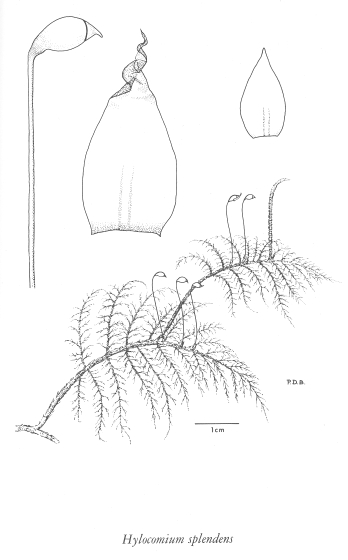E-Flora BC: Electronic Atlas of the Flora of British Columbia
Hylocomium splendens (Hedw.) B.S.G.
step moss (splendid feather moss) Hylocomiaceae Species Account Author: Wilf Schofield Extracted from Some Common Mosses of British Columbia Introduction to the Bryophytes of BC
|
||||||||||||||
